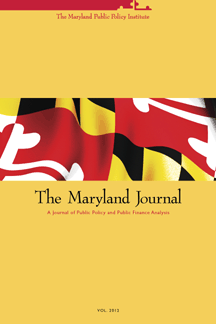Other Post-Employment Benefits in Maryland
Options for and Implications of Reform
Introduction
In October 2008, the Maryland Public Policy Institute and the Calvert Institute released a joint report, written by George Liebmann and Gabriel J. Michael, that provided a detailed look at the status of Maryland's pension and post-retirement benefits liabilities.1 The results were disturbing: the report revealed that not only are many of Maryland's state and local pension trust funds woefully underfunded, but also that state and local governments would soon be revealing for the first time enormous liabilities for post-retirement benefits.
These benefits, commonly known as other post-employment benefits (hereafter OPEB), typically involve a government retiree's former employer paying part or all of the retiree's health insurance premium. Some benefits packages also include dental, vision, and life insurance for retirees. Almost without exception, state and local governments have been funding the cost of such benefits on a pay-as-you-go basis, meaning that each year they would swallow the cost of ever-increasing premiums for a growing number of retirees out of general funds. With the explosion in health insurance costs, however, a pay-as-you-go system has become increasingly unaffordable. From 1999 to 2009, the median annual growth rate of the cost of providing OPEB to Maryland's state retirees was 13 percent; meanwhile, the median annual growth rate in beneficiaries over the same time period was just 4 percent.2 Future costs will only escalate, and without any kind of reform, these costs will have a large fiscal effect on all medium and large state and local governments. Paying the bill when due could require significant cuts in services and tax increases, and potentially even drive smaller governments into bankruptcy.3
To read or download the full article or PDF, please login or become a subscriber.






